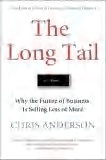In a client meeting the other day, we were discussing with several individuals in the company their soon-to-launch international sites. The sites, which will have domain names in various European and Latin American countries, showcase the same streaming videos (with appropriate translations). So my team was asked a reasonable question: Will anyone have trouble playing the videos?
Even three years ago, this would have been a tough question to answer with confidence. Those were the days when you had to have separate formats for Quicktime, RealMedia and Windows Media. The answer would have been complicated and unsettling. Now, the problem is solved by presenting the videos in one format only: Macromedia’s Flash.
My reply: “Yes. Because they are presented in Flash, and because Flash is a universally accepted browser plug-in, you can be confident that everyone in every country will see them. After all, YouTube wouldn’t exist if it weren’t for Flash!”
This was the first time I realized just how ubiquitous Flash really is. It’s true. I blurted out my YouTube declaration, but upon reflection, I seriously can’t imagine that the site could be so addictive if it weren’t for the ease with which you can view its contents. How addictive is it? YouTube is, as of today, the twelfth most popular site on the web, according to Alexa. That’s a lot of addicts!
When Flash emerged as a way to show rich content that was independent of browser type, I recognized its value for photography, typography and animation. But I never would have anticipated that it would be video’s “killer app.” Thank you, worldwide propagation of broadband connections.
And thank you, Macromedia.
 hoopla on Chris Anderson’s long-awaited book, aptly titledÂ
hoopla on Chris Anderson’s long-awaited book, aptly titledÂ